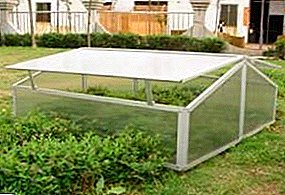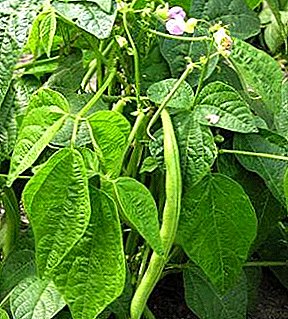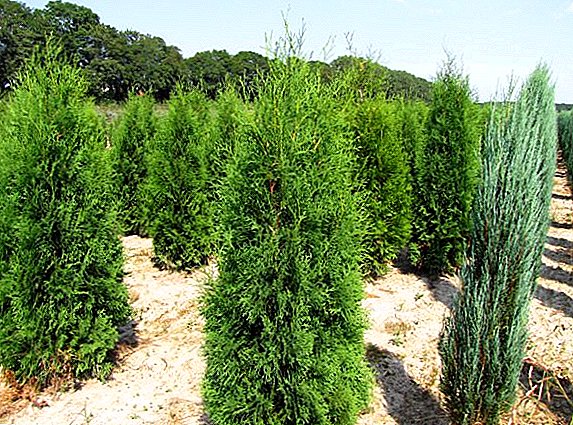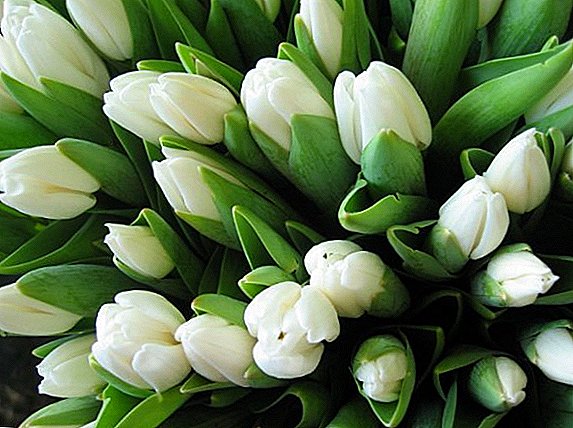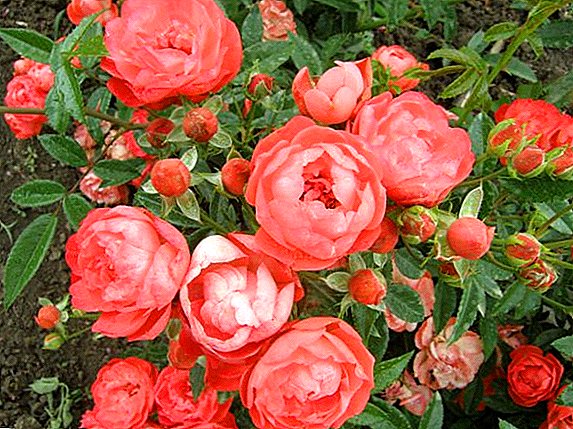 If an ordinary rose is the queen of flowers, everyone knows groundcover rose known to few, try to figure out what kind of plant it is and how to grow it. Ground cover roses they represent a whole group of plants that have winding stems up to 2 m long and small shiny leaves that cover the ground like a carpet. The description will help to tell what a groundcover rose looks like: it is a plant that grows vigorously in width, with rather long creeping and drooping shoots that are covered with raceme-shaped inflorescences formed by multiple small flowers during flowering. Flowers with a diameter of 10-50 mm have white, pink, red color and are quite diverse in appearance - dense and semi-double, as well as simple. The foliage of these roses does not fall for a long time, in rare cases it remains even until spring.
If an ordinary rose is the queen of flowers, everyone knows groundcover rose known to few, try to figure out what kind of plant it is and how to grow it. Ground cover roses they represent a whole group of plants that have winding stems up to 2 m long and small shiny leaves that cover the ground like a carpet. The description will help to tell what a groundcover rose looks like: it is a plant that grows vigorously in width, with rather long creeping and drooping shoots that are covered with raceme-shaped inflorescences formed by multiple small flowers during flowering. Flowers with a diameter of 10-50 mm have white, pink, red color and are quite diverse in appearance - dense and semi-double, as well as simple. The foliage of these roses does not fall for a long time, in rare cases it remains even until spring.
Did you know? The largest rose bush grows in the United States, its diameter is almost equal to two meters.
 It is a mistake to think that ground cover plants are only creeping roses, since they are represented not only by low-growing varieties.. An important feature of these roses is that their height will always be less than the width. Conditional subgroups of these plants are distinguished: creeping in a horizontal plane, low lodging, strongly branching low, widely growing, falling and dense, straight-growing. Growing up, flowering clouds of lush bushes of any subgroup will decorate the plot of land, covering rather large areas.
It is a mistake to think that ground cover plants are only creeping roses, since they are represented not only by low-growing varieties.. An important feature of these roses is that their height will always be less than the width. Conditional subgroups of these plants are distinguished: creeping in a horizontal plane, low lodging, strongly branching low, widely growing, falling and dense, straight-growing. Growing up, flowering clouds of lush bushes of any subgroup will decorate the plot of land, covering rather large areas.
Features planting ground cover roses in the garden
Groundcover roses are less demanding in care and cultivation than other varieties of garden roses, but also need sufficient care, taking into account their characteristics. We will try to briefly outline the basic moments of planting and further care of these beautiful plants.
Choosing a place to plant a ground cover rose
The important moment for getting a lush, healthy bush of a ground cover rose is the right choice of a place for planting and the proper level of agrotechnology, in the future care for the blossoming pride of the garden will be simple.
Important! When choosing a place for planting ground cover roses, you should avoid areas where trees and shrubs such as cherries, apricots, pears, hawthorn or other rose varieties grow, as they greatly deplete the soil, and the rose bush will grow in adverse conditions.
 It is desirable that the area on which the rose will grow has a slight slope to the west or southeast for optimal lighting in the morning and light shading in the noonday period. The scorching rays of the sun can have a detrimental effect on the flowers, which will fade and fade. It is not recommended to plant young rose bushes near powerful plants in order to avoid lack of moisture and nutrients, as well as near high walls and in strong shade, which is fraught with slow growth of the root system and shoots and lack of flowering.
It is desirable that the area on which the rose will grow has a slight slope to the west or southeast for optimal lighting in the morning and light shading in the noonday period. The scorching rays of the sun can have a detrimental effect on the flowers, which will fade and fade. It is not recommended to plant young rose bushes near powerful plants in order to avoid lack of moisture and nutrients, as well as near high walls and in strong shade, which is fraught with slow growth of the root system and shoots and lack of flowering.
The place for planting roses should not be excessively wet and have close groundwater, as in wet soil the roses will not have adequate oxygen circulation, and in winter in severe frosts the roots can overcool and cause the death of the whole plant. At increased soil moisture, drainage of the soil should be carried out with the use of moisture-removing tubes.
The best soil for roses will be loamy, which will pass oxygen and water to the root system. For improvement, stony and clay soils are diluted with a mixture of sand, peat, compost and bird droppings, and sandy soils - with a mixture of compost, peat, turf and clay. Favorable growth conditions will be in weakly acidic soils with a pH level of 5.5-6.5. Increased acidity can be neutralized with limestone or ash, and alkaline reactions - with superphosphates.
Preparatory work before landing
 The place of the rose garden should first be dug up and thoroughly removed weed plants and their rhizomes, at the request of the gardener, the soil can be treated with Roundup and loosened well. Moreover, the entire area of the future rose garden, where the rose bushes will grow, is subject to preparation and processing, because over time, the roses will densely occupy the area allocated to them. For planting a bush in advance dig a hole about half a meter deep and of the same diameter. For free growth of bushes, the distance between them should be 30-100 cm, depending on the varietal size of the ground cover roses.
The place of the rose garden should first be dug up and thoroughly removed weed plants and their rhizomes, at the request of the gardener, the soil can be treated with Roundup and loosened well. Moreover, the entire area of the future rose garden, where the rose bushes will grow, is subject to preparation and processing, because over time, the roses will densely occupy the area allocated to them. For planting a bush in advance dig a hole about half a meter deep and of the same diameter. For free growth of bushes, the distance between them should be 30-100 cm, depending on the varietal size of the ground cover roses.
How to plant a groundcover rose in the garden
Planting groundcover roses can even be a novice gardener. To begin with, it is necessary to prepare a nutritious soil mixture - mix garden soil, turf, sand, clay, peat, humus by a bucket of each of the ingredients, add 100 g of superphosphate and ash. In a hole dug in 15-20 days, a layer of bird dung approximately 10 cm thick is poured. Then a small mound is formed from the nutrient soil in the center of the planting hole on which the seedling is placed.
The roots of the plant should be evenly straightened for better growth and rooting, after which you can pour the soil mixture, periodically shaking the seedling to better fill the inter-root space with earth. After the planting pit is filled with soil, it should be compacted, watered with a bucket of warm water and spud a seedling in an earthen embankment of 15-20 cm. It is recommended to shade a sapling of days for 10-15 days after planting.
Important! Saplings of roses before planting should be cut to 25-30 cm and treated with copper sulfate - this will increase the viability of the young plant.
Top tips for the care of ground cover roses at their summer cottage
After the covering sheet has been planted, it has been planted in a suitable place and taking into account all needs, it should be properly cared for, and it will flourish fragrantly and fragrantly for years. Let us consider in more detail the process of growing ground cover roses and how to care for them.
How to water the ground cover roses
 After planting, rose saplings and later on young bushes require frequent moderate watering as the soil dries out. Adult bushes are watered once in 6-9 days, during dry periods the frequency of irrigation increases. Watering is best done with warm water in the morning. A rose from the second year of life requires a bucket of water for favorable development and flowering, and this plant does not accept overly moist soil, since it can be detrimental to the roots. In the autumn, rose bushes do not need watering.
After planting, rose saplings and later on young bushes require frequent moderate watering as the soil dries out. Adult bushes are watered once in 6-9 days, during dry periods the frequency of irrigation increases. Watering is best done with warm water in the morning. A rose from the second year of life requires a bucket of water for favorable development and flowering, and this plant does not accept overly moist soil, since it can be detrimental to the roots. In the autumn, rose bushes do not need watering.
Features fertilizing ground cover roses, how to fertilize a plant
Care for ground cover roses involves their regular fertilizer and fertilizing. In the spring, organic or nitrogen fertilizer is applied, when forming buds on a bush, it is fed with sodium humate or potassium sulfate, after the flowering is finished - potash or phosphorus fertilizer according to the attached instructions. For optimal prewinter feeding, organic fertilizer should be applied at the end of summer - early autumn, after 15 days - potash and phosphate, and after another 10 days - potassium sulphate. This systemic fertilizer will prepare the plant for the winter and nourishes it with forces for active growth in the spring.
Pruning roses
Groundcover roses in the first year of life should be slightly shortened, it stimulates tillering. In the following years, dried and broken stalks should be cut out, thinning slightly thick bushes for air circulation and maintaining the necessary plant shape. After 5 years, you can rejuvenate the bush, cutting off all the stems at 25 cm from the soil. The cut is carried out at an angle of about 45 degrees, departing 5-10 mm from the kidney, it is recommended to process sections with a diameter of more than 10 mm with garden pitch, and the whole bush to treat with Bordeaux mixture.
Important! A groundcover rose is able to bloom in the year of planting, but for optimal plant development in the first year of life, unblown buds must be removed.
Propagation of ground cover roses
Groundcover roses successfully propagated by layering. To do this, in the beginning of spring, the young long shoot bends down to the soil several times to obtain several plants, and the extreme shoots of the shoot must be above the ground. The shoot is pinned in a small fossa filled with nutrient soil, one kidney down to let the roots in, and several nearby buds on a layer remain above the ground to form new shoots.
 Layers should be watered frequently, and in the autumn, provided they are rooting, they are ready for transplanting to other beds for growing. After the young rooted seedlings grow during the year, they are transplanted to a permanent place to grow.
Layers should be watered frequently, and in the autumn, provided they are rooting, they are ready for transplanting to other beds for growing. After the young rooted seedlings grow during the year, they are transplanted to a permanent place to grow.
How to cover the ground cover roses for the winter
Groundcover roses practically do not require care in the fall, except for sanitary pruning of the stems. Since this type of flower is quite cold-resistant, it has a thick enough layer of snow for wintering. But it is better to be safe, especially with the likelihood of low temperatures in snowless winter periods, and to cover the bush of a ground cover rose with fir or pine twigs in the fall, which will also protect the shoots from rodents. Stalks of high varieties of roses should be laid on the surface of the soil, slightly bending them down. The shelter should be placed on the bushes in the autumn after the average daily air temperature has dropped, and in early spring should be removed, preventing roses from rotting and rotting under the shelter.
Did you know? Japanese breeders brought a variety of roses, the color of which is red and in the evening - white.
Pros and cons of growing ground cover roses at their summer cottage
 As pluses of ground-covering roses, its decorative properties are distinguished, namely: a beautiful bush - compact or creeping, fragrant flowers, a long flowering period, almost without interruptions, the ability to use in various variants of landscape design. These types of roses are hardy and resistant to diseases, which is very easy to care for them. Having bought once a sapling of ground-covering roses, which will be pleasing to the eye for several years and being the pride of its owner, one can significantly save the cost of growing annual flowers.
As pluses of ground-covering roses, its decorative properties are distinguished, namely: a beautiful bush - compact or creeping, fragrant flowers, a long flowering period, almost without interruptions, the ability to use in various variants of landscape design. These types of roses are hardy and resistant to diseases, which is very easy to care for them. Having bought once a sapling of ground-covering roses, which will be pleasing to the eye for several years and being the pride of its owner, one can significantly save the cost of growing annual flowers.
The disadvantages of ground cover roses include the small size of flowers, as well as the properties of tender flowers to fade under the direct rays of the sun, lose color, the edges of the petals darken, deteriorating the appearance of the plant. Faded flowers must be removed from the bush. The negative point - the shoots of these roses grow until late autumn, and they are very vulnerable to low temperatures, which can not always withstand, and under cover the shoots can rot and be affected by fungal diseases. In order to avoid these negative consequences, after the autumn first frost, undoripened stalks of roses should be cut off.
 Ground-cover roses, especially varieties that bloom all summer long, are a real decoration of the site, they are used in the design of a rock garden, a rose garden or a bright flower bed. Before choosing a variety of a creeping rose, consider its height, width and growth rate for optimal planning of its flower garden.
Ground-cover roses, especially varieties that bloom all summer long, are a real decoration of the site, they are used in the design of a rock garden, a rose garden or a bright flower bed. Before choosing a variety of a creeping rose, consider its height, width and growth rate for optimal planning of its flower garden.


